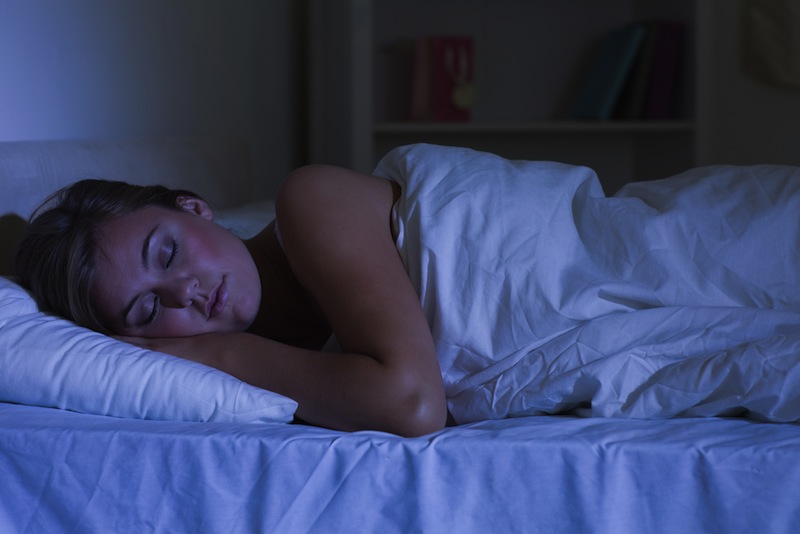Dreams and Brain Disease: REM Sleep Cells Linked to Disorders

Where do dreams come from? Researchers now say they know: A specific group of cells in the brain stem is responsible for controlling dreaming sleep, also called Rapid Eye Movement (REM) sleep, a new study says.
The study also showed that damage to those cells could lead to a sleeping disorder called REM Behavior Disorder (RBD), which makes a person act out violent dreams.
The findings have far broader implications than pinpointing the neurological source of dreams, though, said the study's principal investigator, John Peever, a professor of cell and systems biology at the University of Toronto. Because previous studies have shown that 80 percent of people with RBD develop incurable brain diseases, the new research could give drug companies a specific group of cells to target for therapies that slow the progression of neurodegenerative diseases. [7 Mind-Bending Facts About Dreams]
"For some reason, the cells in the REM sleep area are the first to be sickened, and then the neurodegenerative disease spreads up into the brain and affects the other areas that cause disorders like Parkinson's disease," Peever told Live Science.
Peever presented his team's results May 29 at the 2017 Canadian Neuroscience Meeting in Montreal. The findings have not been published in a peer-reviewed medical journal.
During a healthy night's sleep, a person cycles through light sleep, deep sleep and REM sleep several times. During REM sleep, the neurons in the brain stem send signals to the brain's cerebral cortex — perhaps drawing the details for the dream from the parts of the brain responsible for learning, thinking and moving — as well as to the body's spinal cord, to prevent muscles from moving, Peever said.
During healthy REM sleep, most people do not move around much, although some do twitch or talk. And although some people are known to walk in their sleep, sleepwalking is not a part of REM sleep, but a part of the deep-sleep cycle, when dreaming doesn't occur.
Get the world’s most fascinating discoveries delivered straight to your inbox.
In contrast, people who have RBD frequently have violent dreams and act them out during their REM sleep, injuring themselves and anyone who might be sleeping next them.
The disorder was first described by Dr. Mark Mahowald and Dr. Carlos Schenck, of the University of Minnesota. In their book, "In Principles and Practice of Sleep Medicine," published in 1985, the two doctors presented case histories of people with the disorder, including a 77-year-old minister, who behaved violently in his sleep, sometimes injuring his wife; a 60-year-old surgeon, who reported the feeling of being attacked, and who would jump out of bed during nightmares; and a 57-year old retired school principal, who mistakenly punched and kicked his wife while having nightmares.
Peever said that studies done since then have showed that the vast majority of people who have RBD develop one of three progressive brain diseases. One is Parkinson's disease, which is a degenerative disorder of the central nervous system that afflicts the motor system. The second is dementia with Lewy bodies, which causes forgetfulness, fluctuations in alertness, visual hallucinations and trouble walking. The third is a disorder called multiple system atrophy, which affects the part of the nervous system that controls voluntary movement as well as involuntary movements, including blood pressure and digestion.
"REM Behavior Disorder is in fact the best-known predictor of the onset of Parkinson's disease," Peever said. [5 Surprising Sleep Discoveries]
The brain diseases like Parkinson's and dementia with Lewy bodies typically occur six to 15 years after a RBD diagnosis.
Until now, the link between RBD and these neurological diseases has been anecdotal, though, Peever said. Researchers who studied the brains of cadavers from people who suffered from both RBD and a brain disease found damage to the neurons in the brain stem. But that didn't mean the damage had caused RBD.
"There was a correlation, but no causality," Peever said. "What our study has done is taken away the correlation and show causality."
In the new study, Peever and his colleagues first identified which cells were responsible for healthy REM sleep. They used mice with cells in the brain stem that had been genetically modified to be sensitive to light. When they shined a light onto these cells, it activated the REM sleep in the mice. When they deactivated those cells, the mice did not have REM sleep.
Once the researchers had the cluster of neurons pinpointed, they used a genetically engineered virus to deliver a disease-causing protein – the same one that causes Parkinson's disease — into the REM-generating brain cells. The protein caused the cells to become sick and the mice started to exhibit behaviors indicative of people with REM Behavior Disorder, moving around much more during REM sleep.
"We're saying REM sleep cells get sick, and then you develop REM sleep behavior disorder," Peever said.
The long-term strategy of this research is to develop a drug therapy that could treat patients who have been diagnosed with RBD. Such a therapy would likely not cure the patient of RBD, since the brain cells that cause that disorder would have already been damaged, but it could prevent the disease from spreading to the rest of the brain, Peever said.
"You may have RBD, which is still unfortunate, but you won't develop one of those other brain disorders, which are far more disabling," he said.
Originally published on Live Science.


